Buy vs. Build: Making Strategic Decisions in Tech
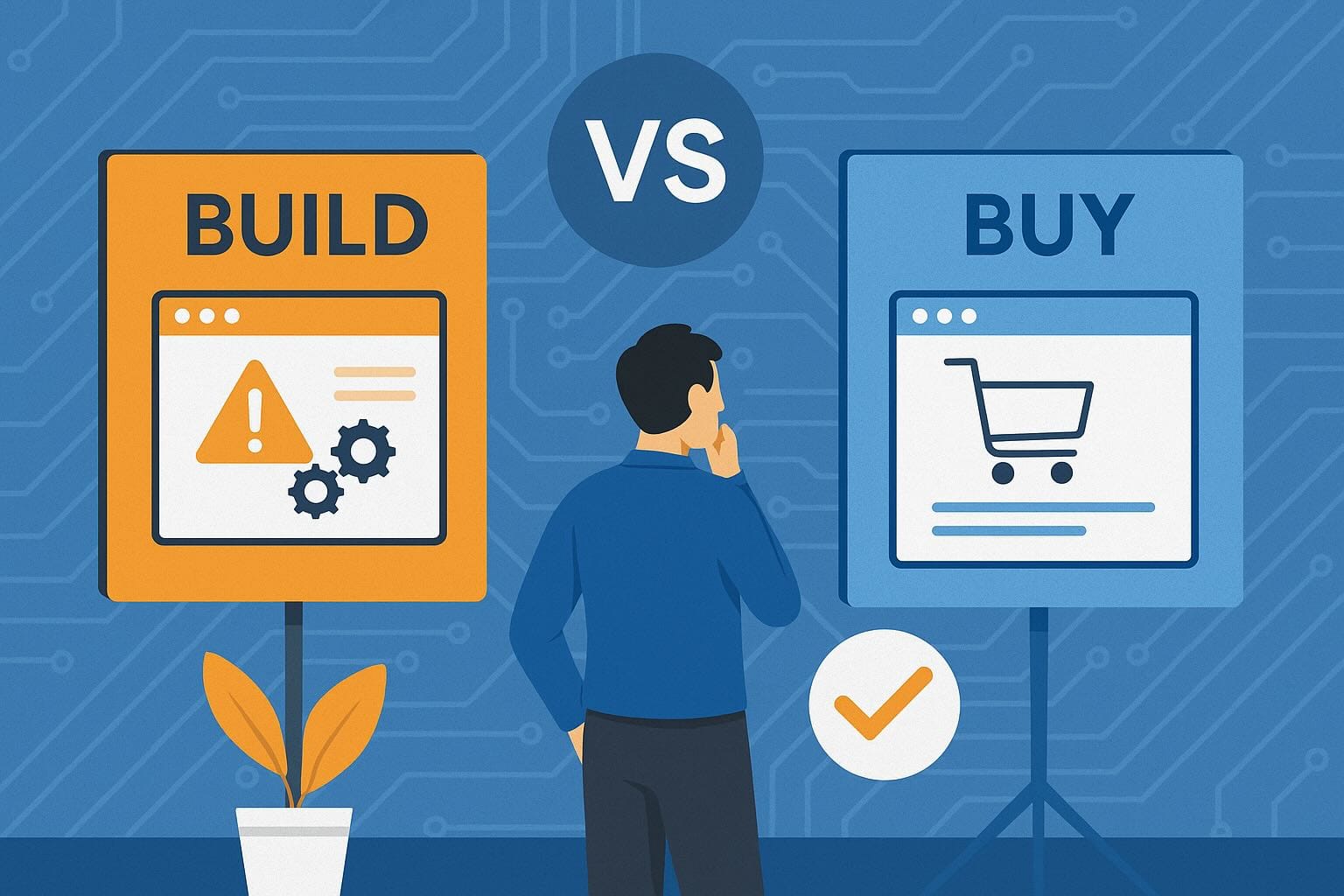
Every growing tech company faces the pivotal question: should we build it ourselves or buy it off the shelf? This decision isn’t just about cost or convenience—it can define your scalability, speed to market, and competitive advantage. As a CTO who's coded through growth stages, I’ve seen how this choice can empower or hinder a product's future. This post breaks down the real factors behind the buy vs. build dilemma with practical frameworks, real cases, and decision trees tailored for startups, fintechs, and leaders navigating time, talent, and transformation.
Making the wrong call between buying and building software can cost your company more than money—it can slow growth, introduce unnecessary complexity, and even erode investor confidence. I’ve seen companies burn six months building tools that already existed—losing both their momentum and their market window. On the flip side, relying too heavily on third-party software can create vendor lock-in and reduce your ability to differentiate.
Hidden costs are everywhere. Build paths often underestimate long-term maintenance and team distraction. Buy paths often overlook integration effort, inflexible customization, and unexpected pricing changes. And then there’s tech debt—those internal tools quickly coded “just for now” tend to stick around far too long.
Strategically, buy vs. build isn’t a binary—it’s a continuum. Understanding where each component falls on that continuum is key to preserving agility without sacrificing ownership.
In Latin America, this decision is further complicated by factors like limited access to specialized talent, budget constraints, and the need to navigate evolving compliance landscapes. Many fintechs need to move fast while proving they’re different—and that often means blending off-the-shelf tools with custom differentiators.
Strategically, buy vs. build isn’t a binary—it’s a continuum. Understanding where each component falls on that continuum is key to preserving agility without sacrificing ownership.
Decision Drivers: What Should Guide You
There’s no universal answer to the buy vs. build question, but certain criteria consistently guide the decision:
1. Time-to-Market Urgency: If you're racing competitors or facing regulatory deadlines, buying can give you a critical head start. Build only if the solution gives you long-term leverage worth the delay.
2. Core vs. Commodity: Ask: is this system central to our unique value proposition? If not, consider buying. Save your engineering focus for what sets you apart.
3. Talent & Capability: Do you have the in-house expertise to build and maintain this reliably? Even a simple tool can become a burden without the right skill set or bandwidth.
4. Integration Complexity: Will the purchased solution work smoothly with your current stack? Buying might save time upfront but cost you dearly if it’s hard to integrate or requires significant rework.
5. Cost vs. Control: Buying has upfront clarity but less control. Building gives flexibility but less predictability. Model your total cost of ownership (TCO) across 3–5 years—not just month one.
6. Compliance & Risk Exposure: If compliance or data residency is critical, buying might introduce exposure. Consider if a build gives you tighter security and audit control.
Ultimately, your guiding question should be: where do we create value—and where are we just consuming it?
Frameworks That Help You Decide
To support structured decision-making, here are three useful frameworks:
1. Gartner’s Pace-Layered Application Strategy
Classifies systems into three layers:
- Systems of Record: Stable, regulated (buy)
- Systems of Differentiation: Unique to your sector (maybe build)
- Systems of Innovation: Experimental or fast-evolving (build)
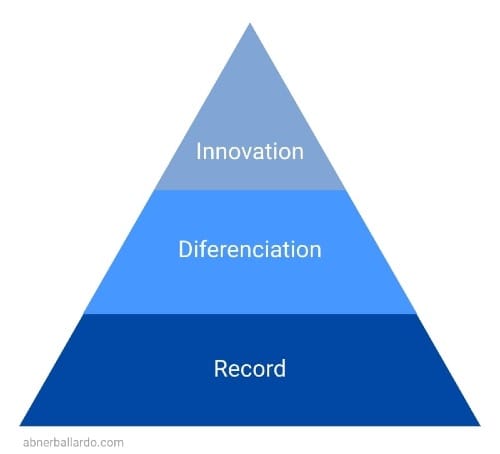
2. Geoffrey Moore’s Core vs. Context Framework
Build what’s core—what creates unique value. Buy everything else that supports operations but doesn’t differentiate.
3. Buy vs. Build Decision Matrix
Use criteria like urgency, strategic value, TCO, team capability, and vendor risk.
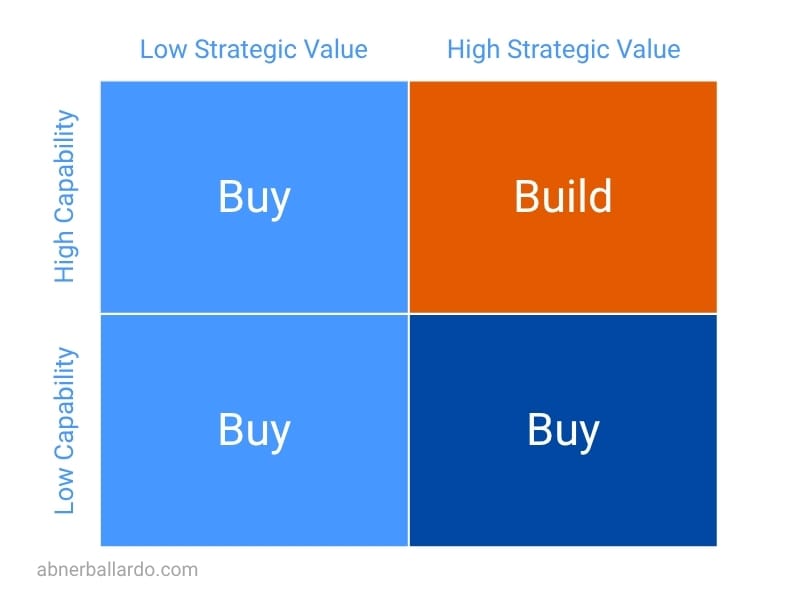
4. My Adaptation for Fintech/Startups
In practice, many of us live in the gray zone. Here’s a hybrid model I’ve used:
- Buy back-office/admin tools (HR, accounting, basic CRM)
- Build customer-facing flows that create unique value (onboarding, KYC, product rules engine)
- Customize open-source where control is needed but time is short
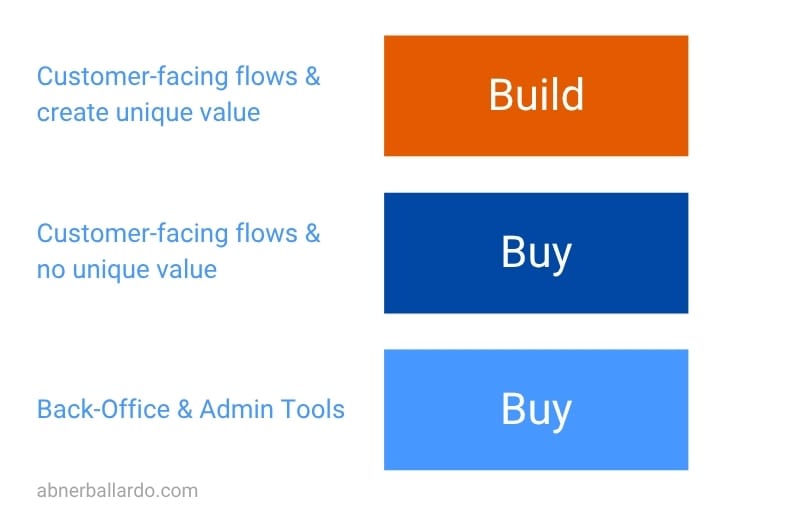
Tip: revisit the decision every 12–18 months. What you buy today might become core tomorrow—or vice versa.
Real-World Decisions: What Others Did
Let’s look at a few real-world examples:
Netflix built their own content delivery and recommendation systems because those are their moat. But they buy standard tools for HR, payroll, and customer communication.
Airbnb leverages open-source tech like Apache Airflow and uses external tools where needed—but their booking experience and host tools are highly customized.
Shopify invested heavily in building a scalable backend that supports massive multi-tenant growth. They bought and later replaced several third-party analytics and marketing tools as needs evolved.
A LATAM Fintech I advised chose to build their web application for final customers—covering onboarding and transaction flows—as this was critical to the user experience and differentiation. At the same time, they decided to buy the lending core engine to save development time and reduce regulatory risk. Meanwhile, they integrated cloud-based accounting, CRM, and other solutions to avoid wasting time on automating commodity tasks.
The lesson: great companies don’t just build or buy—they selectively invest where it matters most.
Red Flags and Green Lights
How do you know when you’re headed down the wrong path?
🚩 Red Flags for Building:
- You say “we’ll replace it later” (you won’t)
- You’re building a generic feature already offered by proven vendors
- Your engineers are stretched thin and feature velocity is dropping
🚩 Red Flags for Buying:
- You’re locked into vendor timelines or roadmap limitations
- You need deep customization and the vendor resists
- The cost model grows faster than your revenue
🟢 Green Lights for Building:
- The feature is core to user experience or revenue engine
- You can iterate fast and measure improvement
- You control the roadmap and compliance posture
🟢 Green Lights for Buying::
- It’s a non-core process (payroll, expense mgmt.)
- You need fast go-to-market with minimal setup
- The solution has proven integration paths and support
Your job as a CTO isn’t to pick one path—but to recognize when the context changes.
Making the Call: A Decision Tree for CTOs
You don’t need to memorize every trade-off—use this decision tree to guide your thinking.
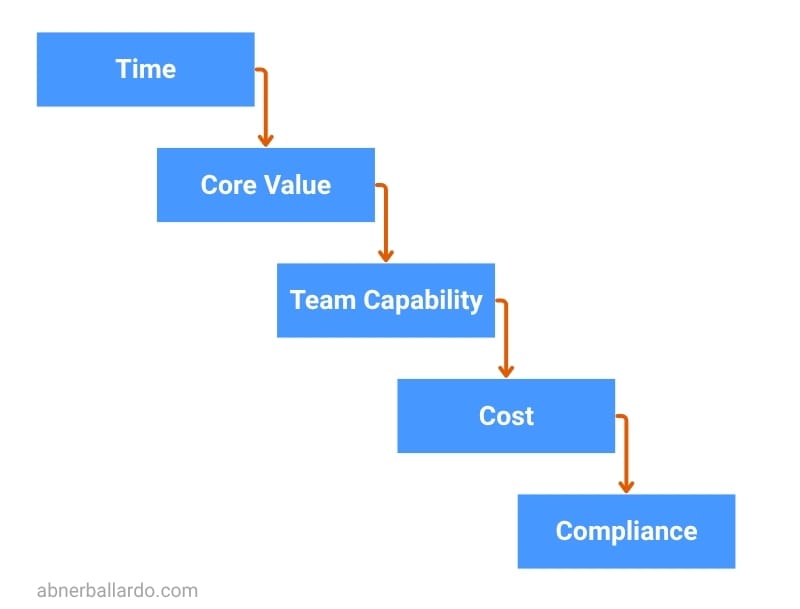
Start with Time: Do you need it now or can you afford 3–6 months of build time?
Then Value: Will owning this give you a long-term competitive edge?
Then Capability: Can your team build and maintain it reliably?
Then Cost: Is the build path cheaper over 2–3 years when you include maintenance?
Then Risk: Does the vendor meet your compliance and audit needs?
If 3 or more answers lean “no”—strongly consider buying.
If 3 or more say “yes”—invest in building.
And when in doubt, start small. Build a prototype, test integrations, or negotiate short-term contracts. Flexibility is your friend.
Final Thoughts + What’s Your Take?
Over the years, I’ve learned that speed and differentiation rarely coexist without intentional decisions. The smartest CTOs I know revisit buy vs. build constantly—adapting their decisions as teams grow, tech evolves, and markets shift.
Whatever you choose, don’t fall in love with the tool—fall in love with the outcome. Tools change. Strategic outcomes endure.
No spam, no sharing to third party. Only you and me.




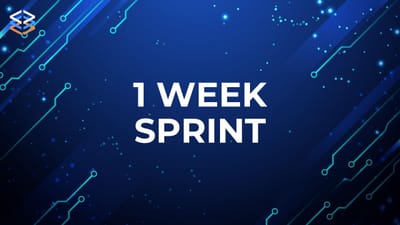
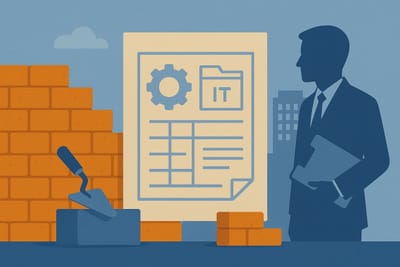
Member discussion